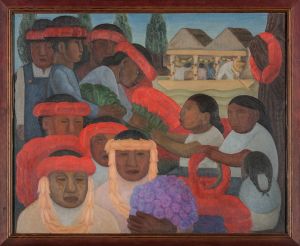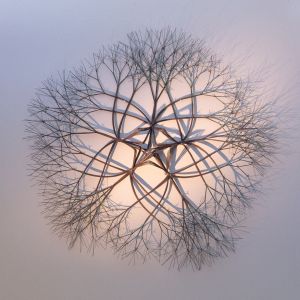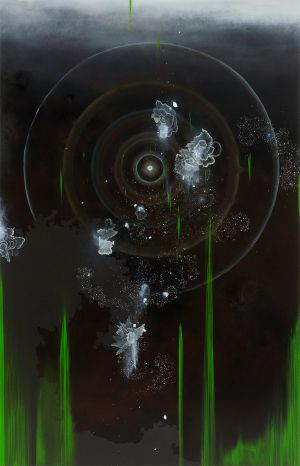PERMANENT COLLECTION ON DISPLAY
Art of the Ancient Americas
Permanent Collection
This exhibition is temporarily closed while undergoing gallery repairs and a reinterpretation. Reopening Spring 2024.
Rich and diverse cultures developed in North, Central, and South America in the thousands of years before European contact. It is generally acknowledged that there are six areas of the ancient world that are considered “cradles of civilization,” meaning areas where civilizations developed independently without outside influence. There are four in what is termed the “Old World”—Mesopotamia, Ancient Egypt, Ancient India, and Ancient China. In the “New World”, the Ancient Americas, there are two—the Norte Chico or Caral-Supe civilization of Coastal Peru in the Andean Region and the Mesoamerican civilization of the Olmec along the Gulf Coast of Mexico.
The objects on view in the Hans Sumpf Gallery of Ancient American Art represent art from Ancient Mesoamerica to the Central Andes and spans more than 2500 years, ending with the Spanish invasion in Mesoamerica in 1519 and Peru in 1532. The collection grew from the original gift of Kenneth D. Stratton in 1966 into a collection of approximately 2000 objects representing the major artistic traditions of regions and cultures including the Olmec, Teotihuacan, West Mexico, Monte Alban, Maya (including Jaina Island), Huastec, Paquimé, the Aztec, and the Central Andean area in Peru and Bolivia.
In the first part of the gallery, you enter the world of Mesoamerica, encompassing Mexico and Central America. While traditionally the Mesoamerican world is examined through defined parameters such as language and geography, these cultures undeniably shared aspects that include the importance of agriculture, the ball game, rituals, and a common core cosmological view. Through art and iconography, twelve themes explore the underlying similarities that tied these independent cultures together. These shared elements of culture are what allows Mesoamerica to be viewed as both a historical and cultural region.
In the later part of the gallery are artifacts from the diverse cultures of the Central Andean region, including the Inca, Moche, Nasca, Chancay, and Chimú peoples. The civilizations in the Andes predate even those in Mesoamerica. These objects are part of the Janet B. and E.O. Blake Hughes Collection first introduced at the Museum in 1995.
This exhibition has been curated by Fresno Art Museum Curator Sarah Vargas with research by curatorial intern Evan Marez under the supervision of Dr. Keith Jordan, Associate Professor of the Department of Art, Design, and Art History at California State University, Fresno.
The 2023/24 gallery renovation was supported with funding from the Daniel R Martin Foundation and Pacific Urban Properties LLC.
Diego Rivera (Mexican, 1886-1957)
Fiesta
(previously referred to as El dia de las flores, Xochilmilco)

The original painting is a very important work in FAM's permanent collection. It was painted around 1926 and represents a group of peasants near Xochimilco, Mexico. The work was purchased by Marguerite Lopez of Fresno directly from Rivera. Upon her death, the painting was purchased from her estate by Caroline and Clarence Harris who gifted the painting to the Fresno Art Museum in 1976. The painting is on view after returning from a traveling exhibition organized by SFMOMA and titled Diego Rivera's America, along with original correspondence between Rivera and Lopez and other related items of interest.
Image: Diego Rivera, Fiesta, 1926, Oil on canvas, 25" x 31", FAM76.1, © 2023 Banco de México Diego Rivera Frida Kahlo Museums Trust, Mexico, D.F. / Artists Rights Society (ARS), New York
Ruth Asawa (American, 1926-2013)
Untitled

This large Ruth Asawa metal sculpture, after cleaning, has a new permanent home in the Museum.
Ruth Asawa was an American artist and sculptor nationally recognized for her wire sculptures, public commissions, and activism in arts education. She was the Fresno Art Museum's Counsel of 100 Distinguished Woman Artist in 2001. Born in Norwalk, CA, she lived and worked in San Francisco, CA from 1949 until her death in 2013.
Image: Ruth Asawa, Untitled, (S.440, Wall-Mounted Tied-Wire, Open-Center, Five- Petaled Form Based on Nature) C.1975, Copper wire, 50 x 50 x 6 1/2 in. (127 x 127 x 16.51 cm) Artwork © Estate of Ruth Asawa, Collection of the Fresno Art Museum, Gift of the Artist in honor of Robert Barrett’s 10th anniversary as FAM Executive Director
Darren Waterston (American, 1965)
Last Days (Gabriel)

Fresno born Darren Waterston is best known for his lyrical abstractions resembling dripping organic forms and misty landscapes. He has been exhibiting his paintings, works on paper, and installations in the U.S. and abroad since the early 1990s. He studied at the Otis Art Institute in Los Angeles before attending the Akademie der Kunst in Berlin. He currently lives and works in New York.
Image: Darren Waterston, Last Days (Gabriel), 2007, Oil on canvas mounted on wood panel, Gift of Kaye Bonner Cummings

